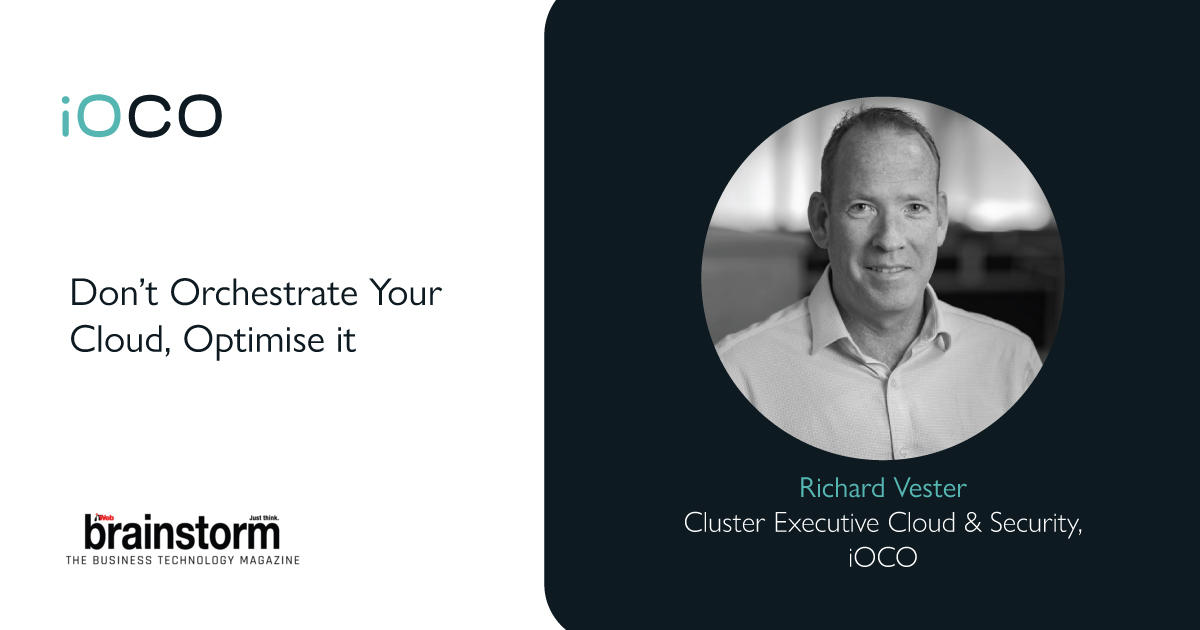If there was one bright spot during the Covid-19 pandemic, it was that the cloud finally coming into its own. According to Flexera, 94% of organisations are now using the cloud, with 91% using the public cloud.
However, businesses are finding that their cloud implementations are not saving them the money they thought they would, and can, in fact, drive up costs. Companies are also finding it challenging to manage an increasingly complex and widespread cloud ecosystem.
“A recent survey found that even though there are various reasons why enterprises might move their computing to the cloud, the top one, at 61%, is cost-cutting initiatives. While many organisations achieve instant wins, they all too often find themselves spending far more than they thought they would because they don’t have the capacity to manage all of their environments properly,” says Richard Vester, iOCO’s Cluster Executive, Cloud & Security.
“Management and orchestration tools are becoming increasingly sought-after as a result, and Gartner forecasts that by 2025, the percentage of enterprises using multifaceted cloud governance tools will be more than 70%, compared to less than 10% in 2020. Unfortunately, simply plugging a cloud management platform (CMP) into the business has not – and will not – achieve the desired results.”
Provisioning pains
Vester says cost management is just the tip of the iceberg, and organisations require more than a dashboard to show them what is being used, and at what cost. “IT organisations are told that they must deliver resources with the speed and flexibility of the cloud, but at the same time, IT is being asked to deliver business value and detailed reporting that demonstrates costs, and, more importantly, savings. While they are under pressure from the business to deliver automation, self-service, speed and reporting, IT teams are equally pressured by end-users, who want simpler provisioning processes,” he says.
“A plug-in dashboard is certainly not going to solve all of these challenges. And even multi-function CMPs won’t necessarily fulfill all of a company’s requirements. More than 90 vendors offer cloud management functionality, with a number offering full CMP functionality. This wide diversity makes it tough to map your requirements to the right product.”
What companies need, he says, is a way not only to better manage their cloud ecosystems, but a way to get granular visibility and insight into every area of that ecosystem. “What every company needs, in fact, is to go beyond orchestration and move to true optimisation”.
What cloud users, whether techies or businesspeople, want is true interoperability, Vester says. This goes beyond simple cloud API compatibility to handling different behaviours across different cloud providers, and, most importantly, a single place to access all of the cloud apps and functionality the business uses.
“When evaluating cloud orchestration solutions, companies should look for the ability to create, provision, monitor and manage all their different cloud services, with one portal providing access to whatever they need,” he says. “We have partnered with CloudBolt, an industry leader, to provide exactly this functionality, in an easy-to-use way.”
Offering an intuitive self-service interface, CloudBolt offers multi-cloud enablement, hybrid cloud automation, and granular visibility across all cloud environments. A portal for DevOps and software development simplifies deployment, and cloud-agnostic workload delivery ensures that provisioning is quick and easy.
Most importantly, chargeback models are a reality when you have a CMP in place, and the instant insights it offers into any and every area required ensures faster decision-making, says Vester.
“CloudBolt’s dashboards, reporting and analytics provide visibility and control throughout a company’s entire cloud estate, down to the granular level. Easily integrated into legacy systems, CloudBolt provides the most effective means of achieving the visibility and transparency companies need across their ecosystem while guaranteeing governance, security and operational efficiency. With CloudBolt, implemented properly, companies can go beyond orchestration to true optimisation,” he concludes.



